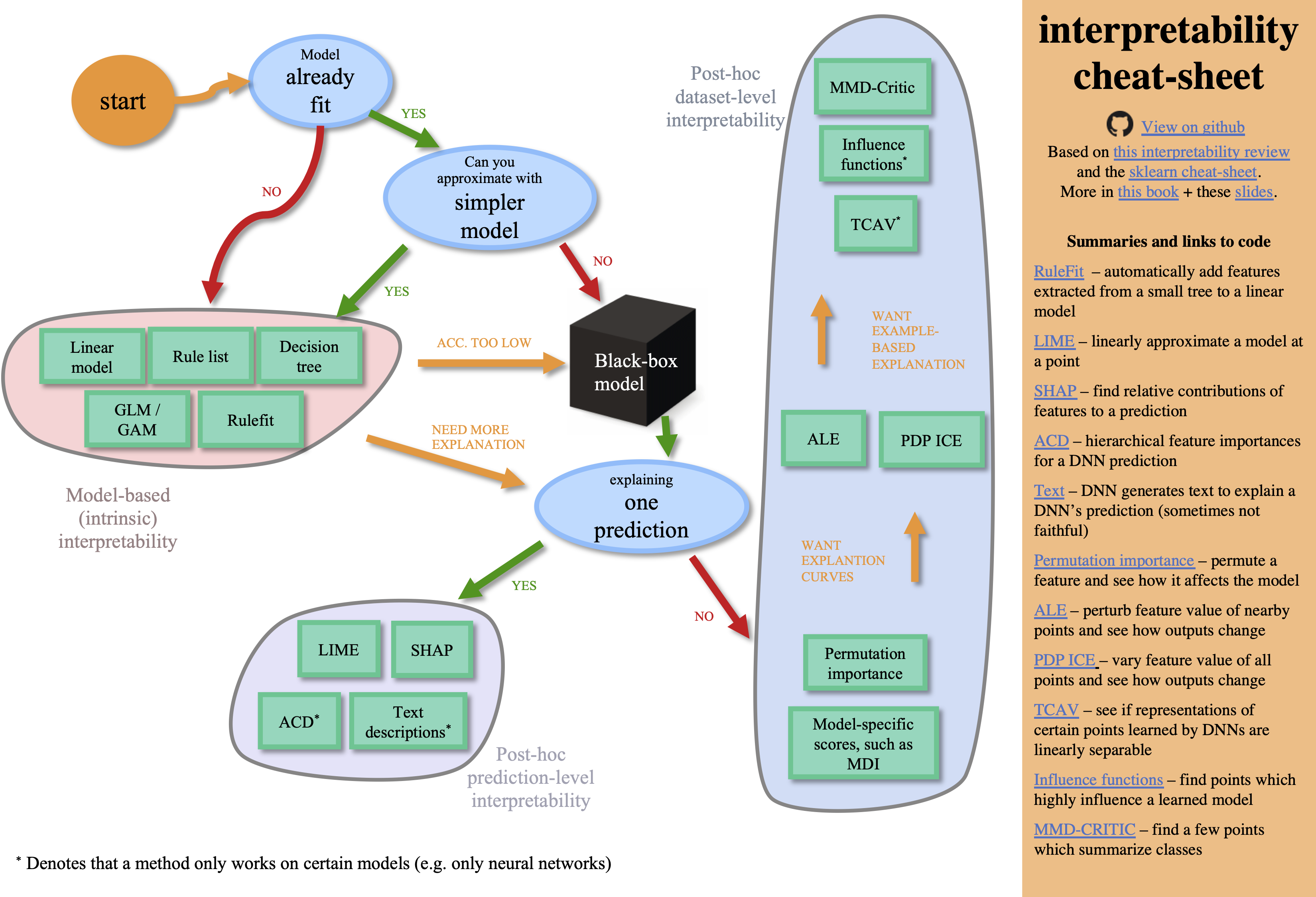Straightforward implementations of interpretable ML models + demos of how to use various interpretability techniques. Code is optimized for readability. Pull requests welcome!
Implementations of imodels • Demo notebooks • Accompanying slides
Scikit-learn style wrappers/implementations of different interpretable models. Docs is available here. The interpretable models within the imodels folder can be easily installed and used:
pip install git+https://github.com/csinva/interpretability-implementations-demos
from imodels import RuleListClassifier, RuleFit, GreedyRuleList, SkopeRules, SLIM, IRFClassifier
model = RuleListClassifier() # initialize Bayesian Rule List
model.fit(X_train, y_train) # fit model
preds = model.predict(X_test) # discrete predictions: shape is (n_test, 1)
preds_proba = model.predict_proba(X_test) # predicted probabilities: shape is (n_test, n_classes)- bayesian rule list (based on this implementation) - learn a compact rule list
- rulefit (based on this implementation) - find rules from a decision tree and build a linear model with them
- sparse integer linear model (simple implementation with cvxpy)
- greedy rule list (based on this implementation) - uses CART to learn a list (only a single path), rather than a decision tree
- skope-rules (based on this implementation)
- (in progress) optimal classification tree (based on this implementation) - learns succinct trees using global optimization rather than greedy heuristics
- iterative random forest (based on this implementation)
- see readmes in individual folders within imodels for details
The demos are contained in 3 main notebooks, following this cheat-sheet:
- model_based.ipynb - how to use different interpretable models
- posthoc.ipynb - different simple analyses to interpret a trained model
- uncertainty.ipynb - code to get uncertainty estimates for a model